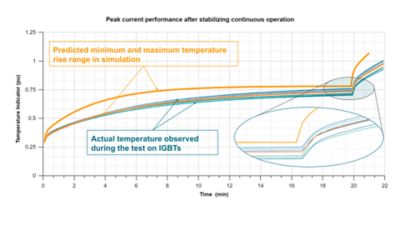Case Study
-
United States -
United Kingdom -
India -
France -
Deutschland -
Italia -
日本 -
대한민국 -
中国 -
台灣
-
Ansys is committed to setting today's students up for success, by providing free simulation engineering software to students.
-
Ansys is committed to setting today's students up for success, by providing free simulation engineering software to students.
-
Ansys is committed to setting today's students up for success, by providing free simulation engineering software to students.
-
Contact Us -
Careers -
Students and Academic -
For United States and Canada
+1 844.462.6797
“Ansys simulation has helped us as a budding startup to develop highly efficient and cost-optimized drivetrain solutions in the e-mobility sector with its affordable startup package. In fact, we wouldn’t have ventured into prototyping a 60-kW air-cooled inverter unless we got simulation confirmation and good correlation confidence with Ansys Icepak software in prior projects. Further, we optimized the parasitics in the switching circuits with Ansys Q3D Extractor software. We were able to handle 400 Arms, even though the product planning target was only 220 Arms.”
— Riaz Ahamed N A, CEO, Nhanz Systems Private Limited
In electric vehicles, most systems delivering power of more than 40 kVA move to liquid cooling due to higher power dissipation. Because of this, drivetrain cost of a hatchback car or small commercial vehicle would increase by at least 60% with the addition of cooling infrastructure. To drive EV adoption in these vehicles, an air-cooled, low-cost solution is needed.
Challenges
In electronics component performance with respect to thermal dependency, efficiency and reliability are key challenges that must be addressed in the design workflow. The team’s main challenge was to ensure practical thermal performance of the controller up to an adverse ambient condition of 55 °C. The design also needed to ensure reliable short-duty peak operation while providing stable, continuous functionality. An additional but important challenge is keeping all paralleled components balanced and operating at same temperature, even in worst-case scenarios.

Engineering Solutions
To address these challenges, the team used Ansys simulations. Ansys Q3D Extractor software was used to compute the circuit parasitic. The model was used to optimize the inductance to ensure dynamic current sharing for parallel components. Ansys Icepak simulation software was used evaluate the thermal performance for defined ambient conditions.
Benefits
- Using simulation, predicted performance was achieved with the concept prototype itself.
- Paralleling optimization, which is almost impossible with empirical methods or by optimization during testing, was achieved with simulation.
- The team tested 60% more current with inductance optimization. However, as losses are higher and cannot be handled by air cooling, liquid cooling is required to meet thermal performance.
See What Ansys Can Do For You
See What Ansys Can Do For You
Contact us today
Thank you for reaching out!
We’re here to answer your questions and look forward to speaking with you. A member of our Ansys sales team will contact you shortly.












